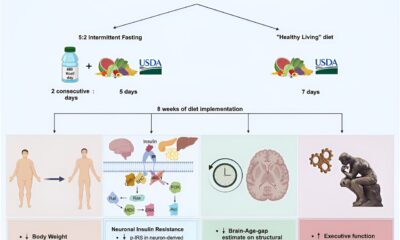Health
Next-generation mosquito nets have saved 25,000 lives in pilot studies

TThe fight against malaria is a test of human intelligence against mosquitoes – and so far our tiny winged enemy is winning. But new results shared this week show substantial improvements in one of the most important tools we have to prevent the life-threatening disease: mosquito nets.
Results shared this week by the New Nets Project, an initiative funded by Unitaid and the Global Fund, show that a few second-generation mosquito nets were tested in endemic areas between 2019 and 2022. About 56 million nets were distributed in Burkina Faso, Benin, and Ivory Coast, among other countries, and several pilot studies found that the new nets were between 20% and 50% more effective than traditional nets at reducing mosquito exposure and reduced the risk of infection by as much as 55%. In total, the New Net Project estimated that the nets have helped prevent up to 13 million additional cases of malaria, saving nearly 25,000 lives.
The results come at a time when the number of malaria cases is increasing. In 2022, the World Health Organization estimated there were nearly 250 million cases more than 600,000 deathswith 80% of deaths among children under 5 years of age. This despite researchers’ growing understanding of mosquito behavior (including some smells attract them) and a growing list of advanced tools, including two vaccines, treatments, gene-edited sterile mosquitoes and malaria sniffing dogs.
Nets have their disadvantages. They only last three years (or twenty washes), create waste and sometimes are abused, causing serious environmental risks. But they save livesAnd for twenty years, nets treated with pyrethroid insecticides have been the best protection against mosquito bites. However, mosquitoes have developed some resistance to pyrethroid insecticides. limit success of major mosquito net distribution programs.
Consider the second-generation nets tested in the recent pilot programs: Interceptor G2, produced by BASF, a chemical company, and Royal Guard, developed by Disease Control Technologies (DCT). The two nets have not been directly compared, so there is no conclusive data on which is more effective, although the Interceptor G2 nets, which are coated with both chlorfenapyr and standard pyrethroid insecticide, consistently outperformed older generation nets. while the DCT nets, which use a combination of pyriproxyfen and pyrethroid, did not always have clear results, says Joe Wagman, the senior public health entomologist at the Malaria and Neglected Tropical Disease Program at PATH, a charity focused on global health. health equity.
Wagman, who has contributed research to the New Nets Project but has no links with Royal Guard or DCT, added that cost also plays a role in the nets countries use in their malaria control programmes. According to UNICEF’s Supply Departmentthe wholesale price of Interceptor G2 nets is $2.94 each, while Royal Guard’s price was not available and Disease Control Technologies STAT did not provide pricing information.
The new nets are more expensive than previous versions, but the additional costs appear to be offset by public health savings. Although the additional cost per case of malaria prevented was between $0.66 and $3.56, the total savings to health care was almost $30 million, according to the New Nets Project.
“Insecticide resistance is one of the biggest challenges in combating malaria around the world,” said Conor McMeniman, assistant professor in the Department of Molecular Microbiology and Immunology at the Johns Hopkins School of Public Health. “Excitingly, a strong recommendation for dual-ingredient insecticide-treated bed nets has been made in the past year, with the aim of breaking the most common form of insecticide resistance in mosquitoes that transmit malaria in sub-Saharan Africa.”
But experts know the new nets are a limited solution, as they expect mosquitoes to eventually become resistant to the second generation of mosquito nets. Research into other means of vector control remains necessary, Wagman said, as does vaccinating a greater percentage of the population against the disease.
“I am really happy that we now have a better mosquito net on the market. I think this is a big improvement and that is a positive development. But… at the end of the day, a mosquito net is still a mosquito net and even a mosquito net that is more effective is still limited,” he said. “We are going to reach the limits of what is achievable with the mosquito nets, how effective the mosquito nets are in killing mosquitoes.”











